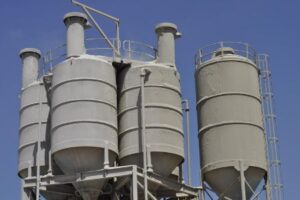Contents
Manufacturing of cement in the industry ? How to make cement in the factory ? cement making process
Cement is the material which binds the other ingredients like fine aggregates, coarse aggregates, steel reinforcement, etc. In this blog post you are able to learn about types of methods used in manufacturing of cement, complete details of dry process in the manufacturing of the cement.

Types of methods used in the manufacturing of cement
The following are the general methods used in the making process of cement materials
- Wet process
- Dry process
Wet process
In this stage the cement making process is done in the presents of the water. In this method fuel consumption takes more and the final product obtained in the last stage has more size of grains.
Dry process
Now a days this process is using because of various advantages like saving fuel and it makes the fine material.
Steps used in the manufacturing of cement by dry process which are
- Selection of raw materials
- Grinding process
- Heating process
- Cooling process
- Addition of gypsum
- Final product
Selection of Raw materials
The raw materials which are related to the lime, silica, clay (or) shale are collected initially. The materials are considered in the proportion of 2C: 1A (2 proportions of calcareous and 1 portion of argillaceous materials). The collected materials are transferred to the tube mills through the conveyer belts.
Grinding process
The raw materials which are collected through the conveyer belts are now there in tube mills. The grinding process is made in this stage to make the powder form material. After obtaining the power it is transferred to the rotary kiln for the heating purpose.

Heating process
The powder material which is collected from the grinding process is now available at rotary kiln. In this stage the temperature of 1300oC to1500oC is supplied to the power form. Due to the presents of high temperature the powder material is converted in to small balls. Those small balls are also called as clinkers. Now after forming the clinkers they are allowed to cool in the next stage.
Cooling process
The cooling process of clinkers is made in this stage with the help of the cooling chambers. The 1500oC temperature is converted to room temperature in this stage. Initially the 1500oC to 500oC is made at the time interval of 15 minutes. After this in the second stage the 500oC temperature is converted in to room temperature at the time interval of 10 minutes. The total time required for the cooling process is 25 minutes.
Addition of gypsum
After the cooling process the clinkers are again transferred to ball mills. In the ball mills the clinkers are grinder to make the fine pozzolana material. At this stage the gypsum of 3% to 5% is added to the grinded material. The main purpose of adding gypsum to the pozzolona material in this stage is to prevent the setting time of the cement.
Final product
After adding gypsum material of 3% to 5% to the mixture in the ball mills grinding process the final product is obtained from the ball mills it is called as our final cement product.
Follow our previous posts here
What are the different ingredients used in the clay bricks ?
What is the grade of the concrete, mix ratio and water cement ratio?
What are the top 5 buildings in the world according to the height?
Complete stair cases design as per IS 456 2000 code standards
Various steps used in the two way slab design as per IS456-2000 code
Conclusions of manufacturing of cement in the industry
Well now the above explained concepts are related to the manufacturing of cement in the industry. Basically the six steps which are related to the, selection of raw materials, grinding process, heating process, cooling process, addition of gypsum and final product cement.
For more information related to the civil engineering concepts and updates follow my YouTube channel civil engineering by shravan.
Note: The above concepts and information only helps for the civil engineering students to get brief idea regarding the topic. Do not consider it for the real time applications.
Thanks for reading this article,
Your shravan
Have a nice day.